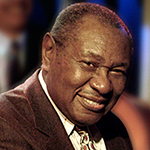A Taste of Things to Come
York Theatre, NYC, November 25, 2016
Reviewed by Chip Deffaa for Cabaret Scenes

Paige Faure, Janet Dacal
Photo: Carol Rosegg
There’s much to savor in A Taste of Things to Come—a cute new show (with book, music, and lyrics by Debra Barsha and Hollye Levin) that’s come to the York Theatre in NYC from the Bucks County Playhouse. It’s a fun show—and, in its best moments, a thought-provoking one—with songs appealingly evoking the sounds and moods of the years in which the show is set.
Act One takes place in the kitchen of a home in Winnetka, Illinois, in 1957.
online pharmacy https://www.mydentalplace.com/wp-content/uploads/2020/07/new/elavil.html no prescription drugstore
Act Two takes place in the same kitchen, in 1967. In both acts, we see four female friends talking about their lives. They discuss their hopes, aspirations, and concerns, reflecting—both by what they say and by what they do not say—the changing values of the times in which they live. (And the authors have wisely chosen two highly contrasting years in which to set a show, taking us from the conformist Eisenhower era to a time of growing personal freedom, individuality, and openness.)
We see four individuals responding in their own ways to the currents of the times they live in, trying to find common ground and sustain friendships, despite personal differences. The songs are likable. And the book has substance. I’d be interested in the four women’s conversations—their struggles to find themselves, fulfill their goals, and maintain connections—even if the play did not have any songs. The writers, aided and abetted well by director/choreographer Lorin Latarro and associate director Joe Barros, maintain a satisfying balance between light entertainment and drama. That’s not an easy thing to do. And they held my interest throughout.
After the show, I ran into a friend who asked me, “What is this new musical like? What other musicals did it make you think of?” I told him that this musical, unlike most I see, really did not remind me of any other. (And that’s a good thing.) I added that this musical made me think just a bit of Wendy Wasserstein’s play Uncommon Women and Others (which I’ve always loved). There, too, the playwright presented us with female friends talking about their lives, their conversations reflecting ongoing sociopolitical changes (such as the advance of feminism). Uncommon Women was a more serious work than A Taste of Things to Come, but it dealt with related themes.
I liked the four performers in this musical: Janet Dacal, Paige Faure, Allison Guinn, and Autumn Hurlbert. They gave us vivid portraits of women trying to figure out who they are, how they fit into the the larger society, and what they wanted to accomplish in life. And the authors have given us four individuals, each trying to cope with specific challenges. I’ve long enjoyed Debra Barsha’s music, and I’d buy a cast album of this show just to hear again the catchiest number in the score, “The Whomp,” which I think would have been very well received on Dick Clark’s American Bandstand back in the day. Having grown up in the eras represented in this show, I like the way the creative team has caught, in many way, the tenor of the times. One terrific detail: the passing reference, in 1957, to America’s most eligible bachelor being Rock Hudson. And they’ve included some neat period TV clips—Betty Crocker, Ted Mack’s Amateur Hour, etc.—which added to the fun, too.
I must add: I was bothered by some distracting anachronisms and errors in the show. Were they important? No and yes. There was so much I liked about the show that the occasional gaffes did not prevent me from enjoying the night as a whole. The mistakes were not deal-breakers for me. I had a good time seeing the show at the York, which has long been an important incubator for new shows. And I hope that, with some tweaking, the show can transfer to another theater for an open-ended commercial run.
But each time I noticed a little error or anachronism—each time something in the play did not quite ring true—I was pulled out of the play for a while. And that’s not good. Eventually I got pulled back in. But for me, the errors and anachronisms were distracting. And since the show aims to tell us what life was like in 1957, and how things had changed by 1967, it ought to get the details right. And making a few fixes might make a good show better—at least for some audience members who care about details — or are old enough to remember those years.
There’s a scene, for example, in which the women, in 1957, are checking out The Kinsey Report. In the scene, one of the women, who’s supposedly viewing a sexually explicit photo in the book, says that the picture must have been printed upside down; the intended joke is that that she’s naively unfamiliar with the sexual position she’s viewing in the photo. But the scene didn’t completely work for me. There were no photos of any kind in The Kinsey Report. Its two volumes (which were published in 1948 and 1953) contained in total more than 1,600 pages of academic text and charts. There were no photos—or even drawings—depicting sexual activity. Had the book included any explicit imagery, it would have been censored. That’s simply the way things were at the time. I wondered, as I watched that scene, if the authors of the script had ever looked at the book. And I wondered how well they understood the 1950s, if they believed a book containing photos of sexual activity could have become a hit in that era.
The scene in which the women are doing the Limbo dance threw me just a bit, too, because the Limbo craze hit the US in 1962. That was the year everyone was doing the Limbo, and listening to Chubby Checker’s hit record, and repeating the catch phrase, “How low can you go?” Most Americans had never heard of the dance before then. And as soon as characters on the stage—in a scene set in 1957—began doing Limbo moves, I thought: “1962.” When one gal began using a Hula Hoop, I thought “1958,” for that was the year of the huge Hula Hoop craze. And the reference to a TV with a “big 12-inch screen” didn’t ring true for 1957. The very early TVs, in the late 1940s and early ’50s, had very small screens.
online pharmacy https://www.mydentalplace.com/wp-content/uploads/2020/07/new/vibramycin.html no prescription drugstore
But by 1957, 21-inch screens were common. And no one then would have thought of a 12-inch screen as big.
In the 1957 scene, one woman, who is white, falls in love in with a man who is black.
And then in the 1967 scene, characters refer to interracial marriage as now being legal—a positive change that they’d witnessed. But in Illinois—and many northern states—interracial marriage had actually been legal throughout the 20th century. The 1967 Supreme Court ruling against laws forbidding interracial marriage mostly affected Southern states where such laws were still being enforced. Again, are such details important? Not to everyone. And I liked the show very much.
But I’d like it even more if more of the details were just right.





